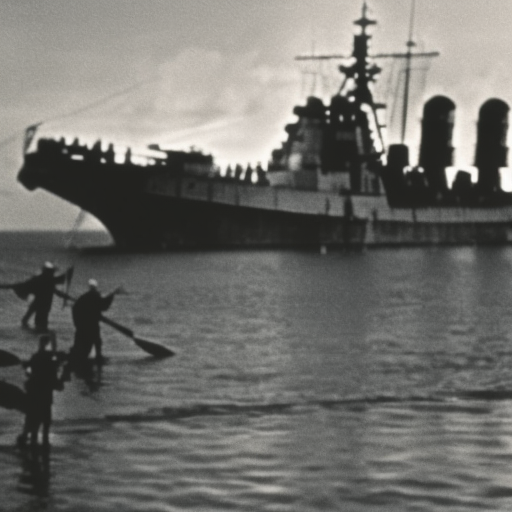Summary:
The naval history of World War II was characterized by intense naval warfare between the major powers, with significant battles taking place in the Atlantic, Pacific, and Mediterranean theaters. The war saw the rise of aircraft carriers as the dominant naval vessel, the use of submarines for both offensive and defensive purposes, and the development of new technologies that would shape naval warfare for decades to come.
Atlantic Theater:
In the Atlantic, the German Navy, known as the Kriegsmarine, aimed to disrupt Allied supply lines and cut off Britain from its overseas territories. The Battle of the Atlantic was fought primarily between German U-boats and Allied convoys, with the Germans initially gaining the upper hand. However, the Allies eventually developed effective anti-submarine tactics and technologies, such as sonar and convoy systems, which turned the tide in their favor. The Battle of the Atlantic was a crucial factor in the eventual Allied victory.
Pacific Theater:
In the Pacific, the Imperial Japanese Navy sought to establish dominance over the region and expand its empire. The attack on Pearl Harbor in December 1941 brought the United States into the war and marked the beginning of a long and brutal conflict. The Pacific theater was characterized by major naval battles, such as the Battle of Midway and the Battle of Leyte Gulf, which saw the use of aircraft carriers as the primary means of projecting naval power. The United States, with its superior industrial capacity, was able to outproduce and outmaneuver the Japanese Navy, ultimately leading to their defeat.
Mediterranean Theater:
The Mediterranean theater saw naval engagements between the British Royal Navy and the Italian and German navies. The British sought to maintain control of the Mediterranean Sea and protect their vital supply lines to North Africa. The Battle of Taranto in 1940, where British aircraft carriers launched a successful surprise attack on the Italian fleet, demonstrated the effectiveness of carrier-based aviation. The Battle of Cape Matapan in 1941 further weakened the Italian Navy and allowed the Allies to gain control of the Mediterranean.
Technological Developments:
World War II witnessed significant advancements in naval technology. The development of radar and sonar greatly enhanced naval surveillance and detection capabilities. Aircraft carriers emerged as the most important naval vessels, with their ability to launch and recover aircraft providing unparalleled strategic flexibility. Submarines played a crucial role in both offensive and defensive operations, with German U-boats wreaking havoc on Allied shipping in the Atlantic. The use of amphibious assault ships, such as the American Landing Ship, Tank (LST), enabled large-scale amphibious landings, as seen in the D-Day invasion of Normandy.
Conclusion:
The naval history of World War II was marked by intense battles and technological advancements that shaped the course of the war. The Atlantic, Pacific, and Mediterranean theaters witnessed significant naval engagements, with aircraft carriers, submarines, and new technologies playing pivotal roles. The Allies’ ability to adapt and develop effective countermeasures ultimately led to their victory, but not without heavy losses on both sides. The lessons learned from World War II continue to influence naval warfare to this day.












